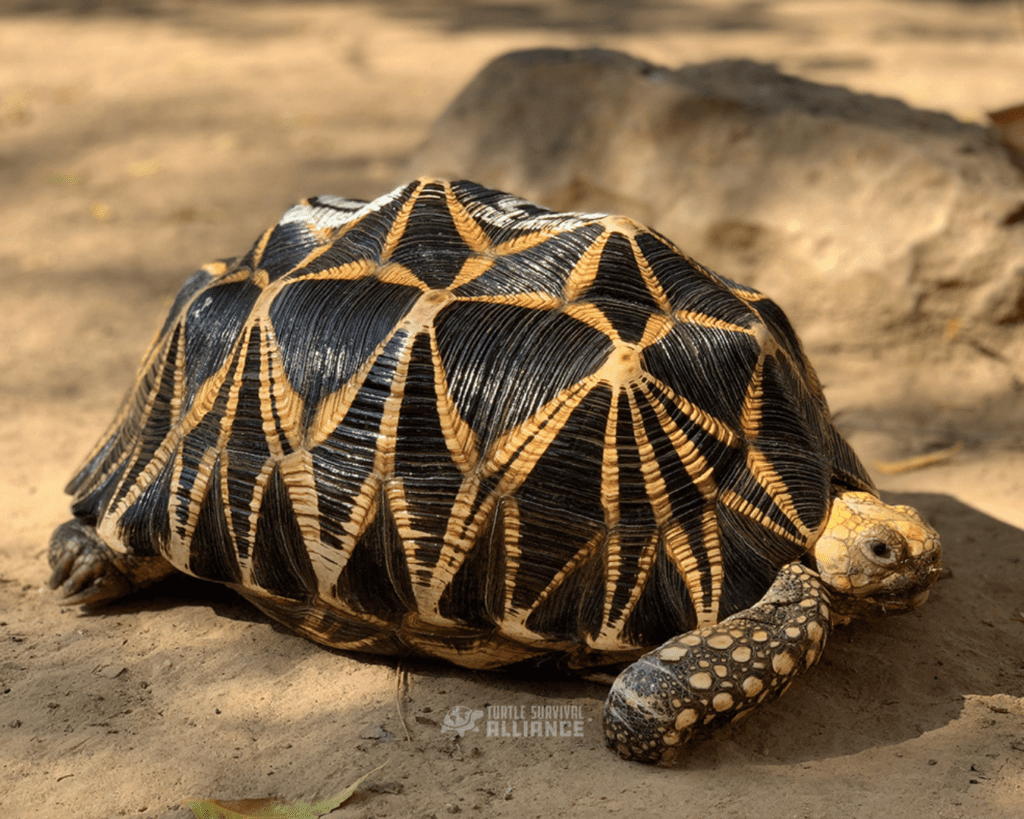Highlighting the Success Story of the Burmese Star Tortoise
In Myanmar, in the late 1990s, the Burmese Star Tortoise was on the brink of extinction. Avidly sought for the wildlife trade, and with relentless removal from the wild, within a decade this tortoise species had almost completely disappeared from its native habitat. By the mid-2000s, it was considered functionally extinct in the wild.
Working to protect the few remaining wild tortoises in captivity, Turtle Survival Alliance, Wildlife Conservation Society, and the Myanmar Forest Department partnered to save them. And, in 2013, after success with breeding them in captivity, we released the first captive-bred Burmese Star Tortoises into the wild. Today, more than 20,000 tortoises have hatched and nearly 5,000 have been released back into their native habitat. Thanks to the dedicated efforts of all partners, these animals are now thriving and reproducing in the wild.

Despite ongoing civil and political unrest in Myanmar, we continue this important work. In 2022, we released 1,000 Burmese Star Tortoises at Shwesettaw Wildlife Sanctuary and hatched more than 2,500 between breeding programs at Lawkanandar, Minzontaung, and Shwesettaw wildlife sanctuaries.
Every contribution helps Turtle Survival Alliance continue our mission to protect & restore populations of turtles worldwide.
Thank you to the following organizations and supporters that make this work possible:
Wildlife Conservation Society, Myanmar Ministry of Natural Resources and Environmental Conservation-Forestry, Wildlife Reserves Singapore, Andrew Sabin and the Sabin Family Foundation, Andrew Walde, Critical Ecosystem Partnership Fund, Paul and Linda Gould, Holohil Systems, Ltd., National Geographic Society, Panaphil Foundation, Paul Goulet and Little Rays Reptiles, IUCN-SOS (Save Our Species), Ed Neil, Turtle Conservation Fund
- Pictured: Burmese Star Tortoise (Geochelone platynota)
- Country of Origin: Myanmar
- Habitat: Dry deciduous and scrub forests with dense grassy undergrowth
- Wild Population: Now increasing; considered functionally extinct by the mid-2000s; wild population now greater than 5,000 individuals
- IUCN Red List Status: Critically Endangered
- Threats: Habitat destruction; intense collection for the pet trade
Header image: Swann Htet.
